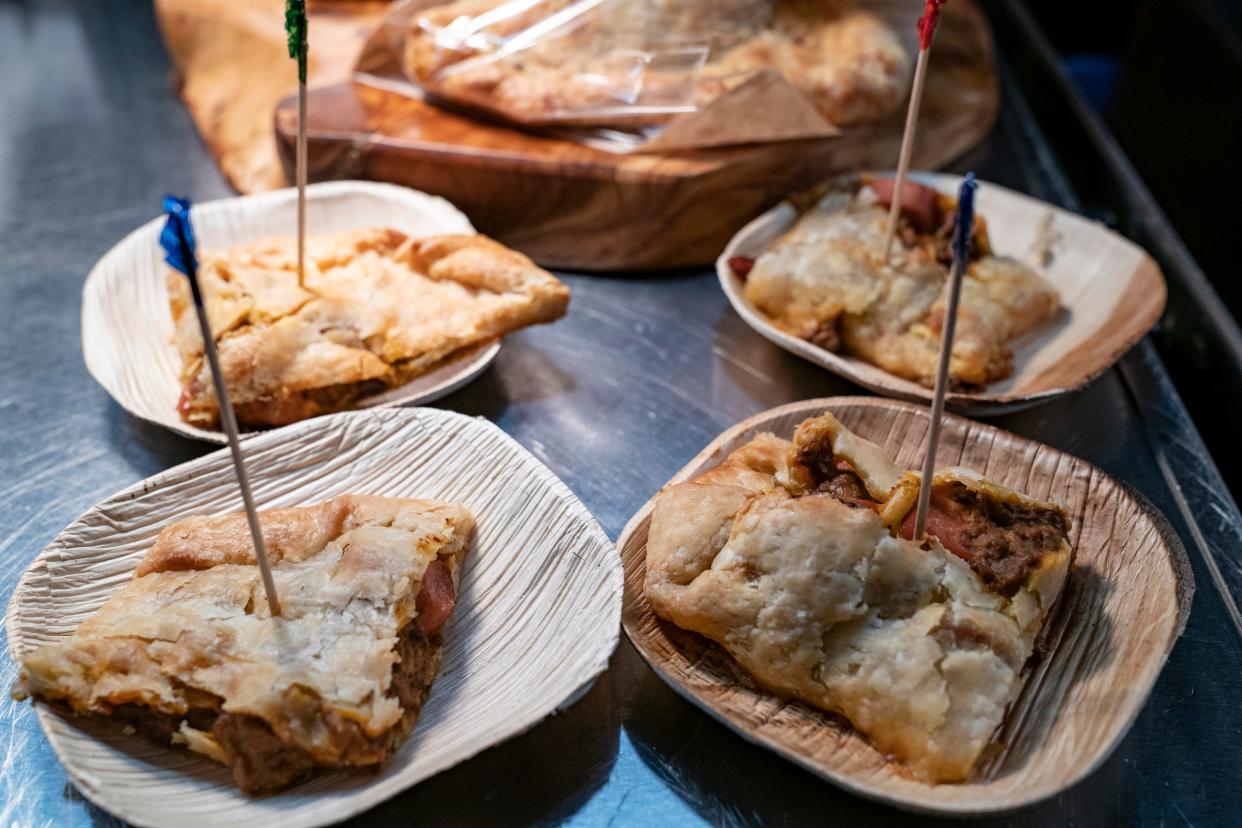How pasties, fudge and cudighi came to be Upper Peninsula food staples

SAULT STE. MARIE — The Upper Peninsula is known for many things — its access to the Great Lakes, the abundance of protected natural land — but not everyone is aware of the food that originates in the area.
On Sept. 27, retired Northern Michigan University Professor Russell Magnaghi was in Sault Ste. Marie to lecture at the Bayliss Public Library about the history of food and agriculture in the U.P.
He spoke about the three most famous foods of the area, pasties, fudge and cudighi and how they became a large part of the culture.
Magnaghi talked about the foods that Native Americans of the area cultivated and how they were influenced by the area. Most native tribes at the time grew and ate what were called the three sister foods: corn, bean and squash. Because of the harsh weather of the Upper Peninsula, growing these foods was a more difficult task, so tribes in the area survived on potatoes, berries, wild rice and maple sugar.
Local tribes also frequently ate fish and game that had to be hunted, but during winter months they relied more on food from plants in the area, Magnaghi said.
More:Pick blueberries in Paradise Brendan Wiesner The Sault News
When European settlers came to the area, they introduced many foods of their own, including fruit plants like apples and pears. Although apples and pears did not grow easily in the area, and pears quickly became a rare find after their introduction, other plants that were introduced became more popular.
The native population began to accept foods, such as potatoes, into their diet, and thus the food became a staple of the area. What many people may not realize is how popular introduced foods such as rutabaga and celery became.
According to Magnaghi, celery became so popular on its own that businesses would advertise their celery across the state. In 1886, the city of Newberry began cultivating celery and shipping it across the state and country to great profit. Celery became such a popular food in the area that local athletic teams were known as the Celery City Cagers and Celeryites.
Subscribe:Get unlimited access to our content
Celery was not the only plant to support an industry, for decades, hundreds of tons of maple sugar were shipped from the Upper Peninsula across the country to great profit.
Although celery and syrup eventually fell out of popularity, many of those food types remain popular today. Wild berries are still so common in the peninsula that cities such as Paradise still hold their annual wild blueberry festival, Magnaghi said.
The most popular food items in the history of the area do not come straight from the ground but are made in a kitchen. Magnaghi says the three most popular foods of the area today are still pasties, fudge and cudhigi.
Cudhigi, an Italian style sausage is rarely found outside the state but is also the less popular of the three food items remaining and can only be found in a handful of restaurants today.
Mackinac Island fudge is famous around the state and country, originating withMurdick’s Candy Kitchen in 1887, the process of making fudge in a large slab, in front of customers turned the food staple into a popular tourist attraction, Magnaghi said.
Pasties are, by far, the most well known local food, and unlike fudge, they can't be found in many places outside of the state. Pasties were made by the food cultures of immigrants in the area coming together in need to make food suitable for their work.

In the western parts of the peninsula, European settlers would build mining towns around sites that extracted copper, iron and other materials from the Earth. Out of a great need to find a food item that could be taken into the mines and not make a mess during the work day, the miners began creating pasties, a pastry with filling of meats and vegetables inside.
The pasty food was inspired by a combination of foods that originated from different places in Europe, foods from Poland and England are credited with being the main inspiration for the food item. Created with rutabaga which came from Scandinavian settlers, gravy and beef, the pasty became a staple for the area very quickly, Magnaghi said.
Despite being a well-known staple for the area, there are still only a few places to find pasties in the state. Local companies such as Yooper Pasty Co. specialize in UP traditional food serve in the Sault Ste. Marie area. Other local restaurants such as Lockside Grill still serve the food in the Sault.
More:Yooper Pasty Co. food truck opening in the Soo, featuring pasties in a variety of flavors
Magnaghi also spoke about the famous restaurants in the area, some of them found in Sault Ste. Marie. Restaurants like Clyde's and West Pier are part of a dying breed of drive-thru restaurants that can only be found in a few places across the state.
According to Magnaghi, there are only five drive-thru restaurants left in the peninsula, and two of them are in Sault Ste. Marie.
— Contact Brendan Wiesner: BWiesner@Sooeveningnews.com
This article originally appeared on The Sault News: How pasties, fudge and cudighi came to be Upper Peninsula food staples

